
Surinder Ram received a M.Sc. in Telematics in 2006 from Graz University of Technology. He was a research assistant at the Institute for Computer Graphics and Vision at Graz University of Technology. He finished his PhD-Thesis focused on Fingerprint-Ridge Orientation Modelling in 2010.
Record not found: ResearchProject
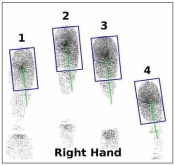
Slap Fingerprint Segmentation
This paper presents a novel approach in segmenting multiple fingerprints from an image. A combination of two-staged mean shift and ellipse-fitting algorithms as well as an elaborate subsequent set of rules is used to segment the single fingertip images. Extensive experimental evaluations demonstrate the success of the approach.
Hödl R, Ram S, Bischof H, Birchbauer J: Presented at Computer Vision Winter Workshop 2009 (CVWW), Eibiswald, Austria, Feb. 4-6 2009. PDF
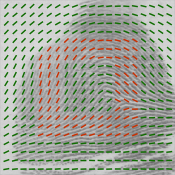
Active Fingerprint Ridge Orientation Models
This paper proposes a statistical model for fingerprint ridge orientations. The active fingerprint ridge orientation model (AFROM) iteratively deforms to fit the orientation field (OF) of a fingerprint. The main application of the method is the OF estimation in
noisy fingerprints as well as the interpolation and extrapolation of larger OF parts. Fingerprint OFs are represented by Legendre Polynomials. We evaluated both,the generalisation as well as the prediction capability of the proposed method. These evaluations assess our method very good results. Ram S, Bischof H, Birchbauer J: Presented at 3rd IAPR/IEEE International Conference on Biometrics (ICB), Alghero, Italy, Jun. 2-5 2009. PDF
This paper proposes a statistical model for fingerprint ridge orientations. The active fingerprint ridge orientation model (AFROM) iteratively deforms to fit the orientation field (OF) of a fingerprint. The main application of the method is the OF estimation in
noisy fingerprints as well as the interpolation and extrapolation of larger OF parts. Fingerprint OFs are represented by Legendre Polynomials. We evaluated both,the generalisation as well as the prediction capability of the proposed method. These evaluations assess our method very good results. Ram S, Bischof H, Birchbauer J: Presented at 3rd IAPR/IEEE International Conference on Biometrics (ICB), Alghero, Italy, Jun. 2-5 2009. PDF
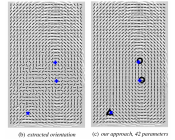
Curvature Preserving Fingerprint Ridge Orientation Smooting using Legendre Polynomials
Smoothing fingerprint ridge orientation involves a principal discrepancy. Too little smoothing can result in noisy orientation fields (OF), too much smoothing will harm high curvature areas, especially singular points (SP). In this paper we present a fingerprint ridge orientation model based on Legendre polynomials.
Ram S, Bischof H, Birchbauer J: Presented at IEEE Computer Society Workshop on Biometrics, associated with IEEE CVPR 2008, Anchorage, USA. Received Best Student Paper Award.PDF,Video
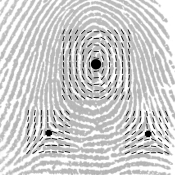
Detection of Singularities in Fingerprint Images using Linear Phase Portraits
In this paper we present a model based approach for the detection of singular points. The presented method exploits the geometric nature of linear differential equation systems. Ram S, Bischof H, Birchbauer J: Published as a chapter in Handbook of Remote Biometrics, Springer Series Advances in Pattern Recognition, pp. 349-362. PDF,DOI
In this paper we present a model based approach for the detection of singular points. The presented method exploits the geometric nature of linear differential equation systems. Ram S, Bischof H, Birchbauer J: Published as a chapter in Handbook of Remote Biometrics, Springer Series Advances in Pattern Recognition, pp. 349-362. PDF,DOI
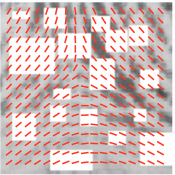
A robust model based algorithm for detection of singularities in fingerprint images
The performance of fingerprint recognition is heavily depending on the reliable extraction of singularities. Common algorithms are based on a Poincare-Index estimation which is a numerical method. These algorithms ignore the topology of the underlying data and are only robust when certain heuristics and rules are applied. In this paper we present a model based approach for the detection of singular points. The presented method exploits the geometric nature of linear differential equation systems.
Ram S, Bischof H, Birchbauer J: Presented at 12th Computer Vision Winter Workshop (CVWW) 2007, St. Lambrecht, Austria, Feb 6-8. PDF
MIB Menu
- Back to Projects Overview
- Back to Group Overview
- Back to Team Bischof
